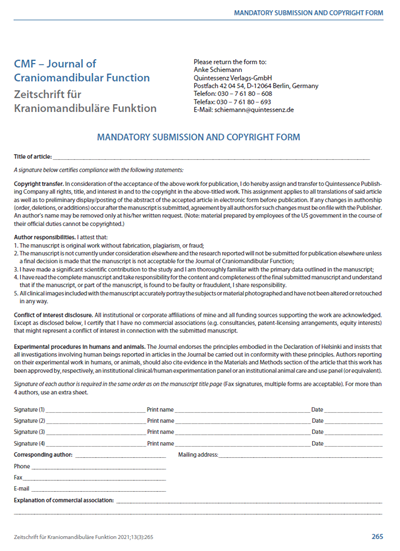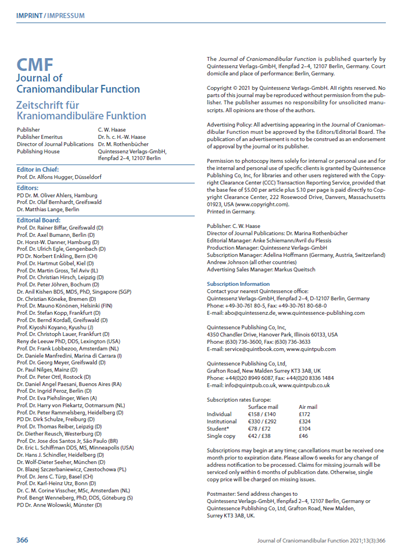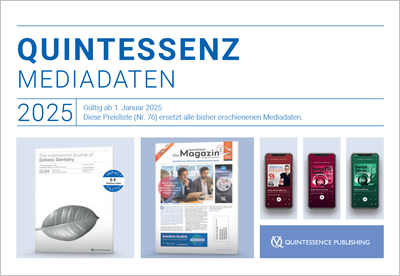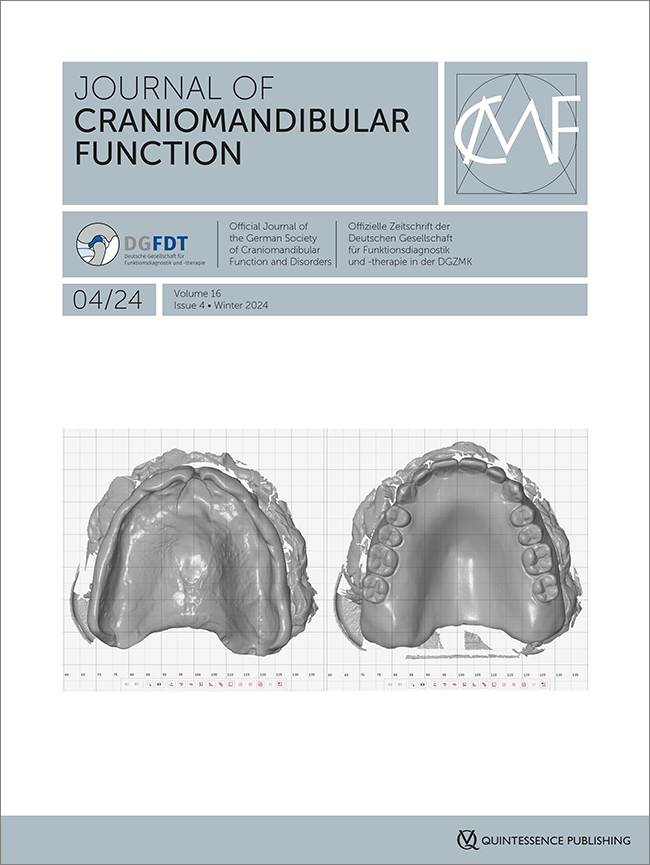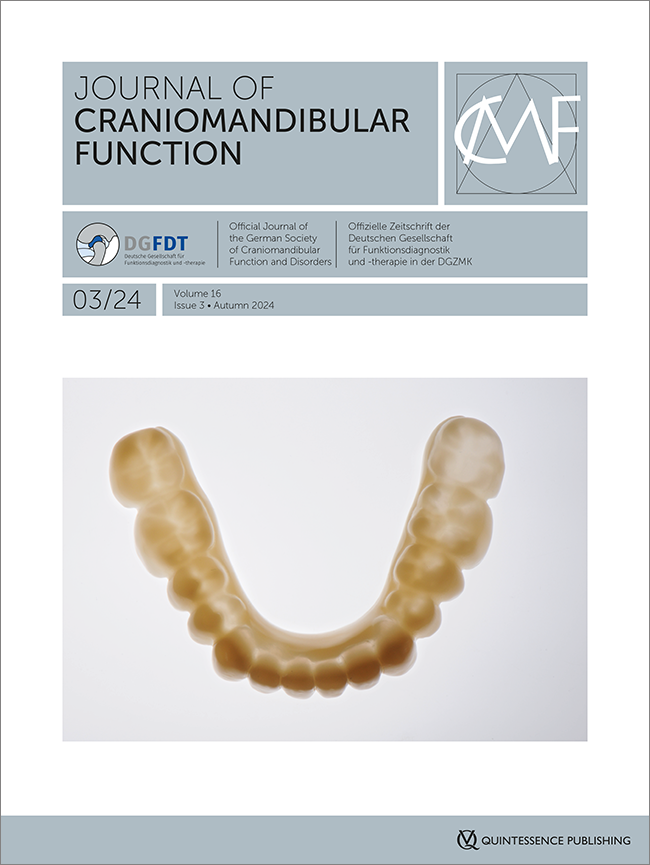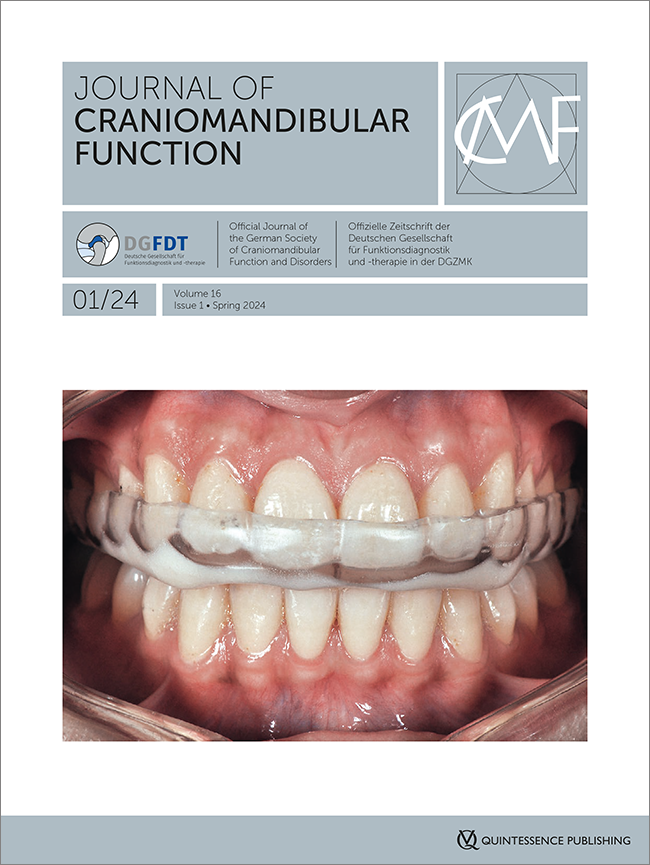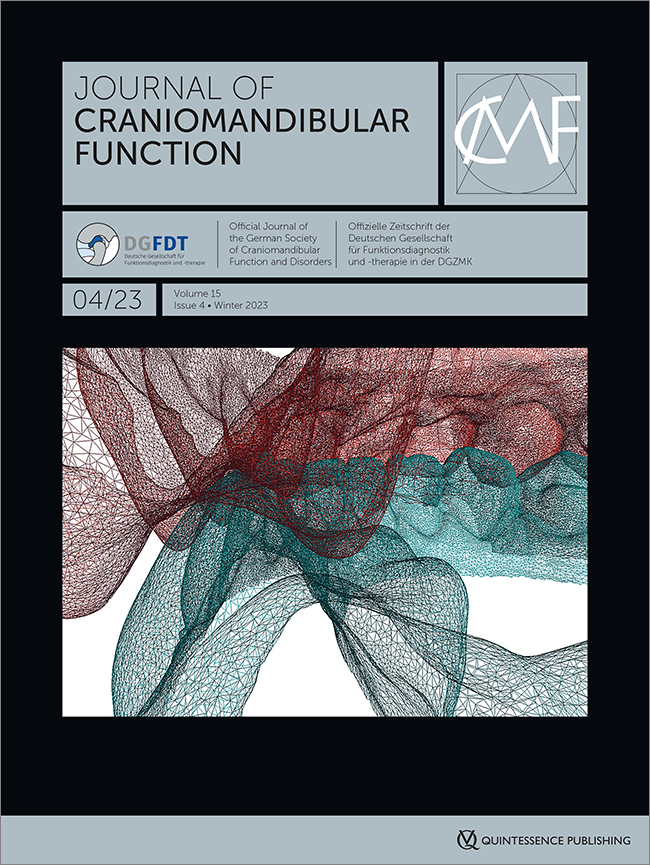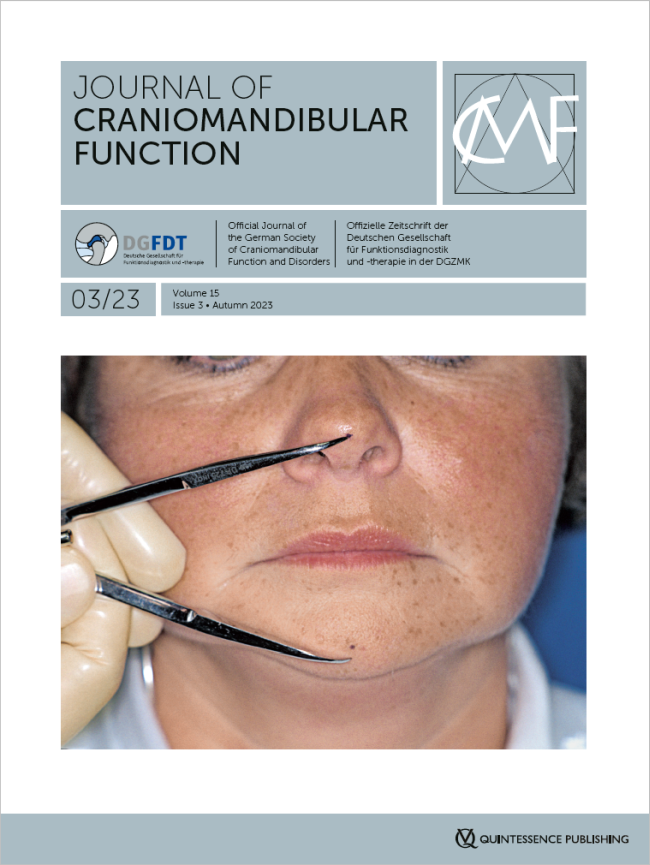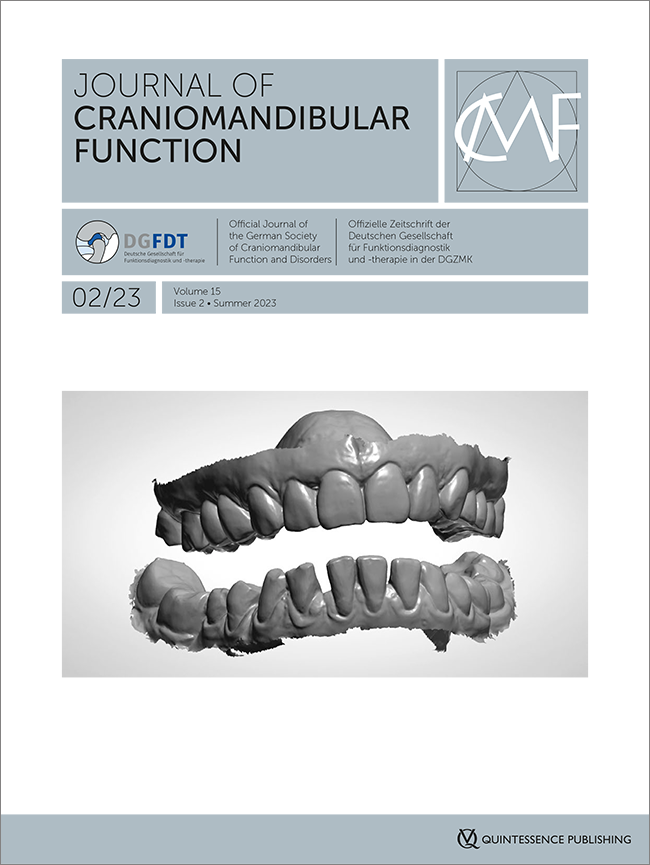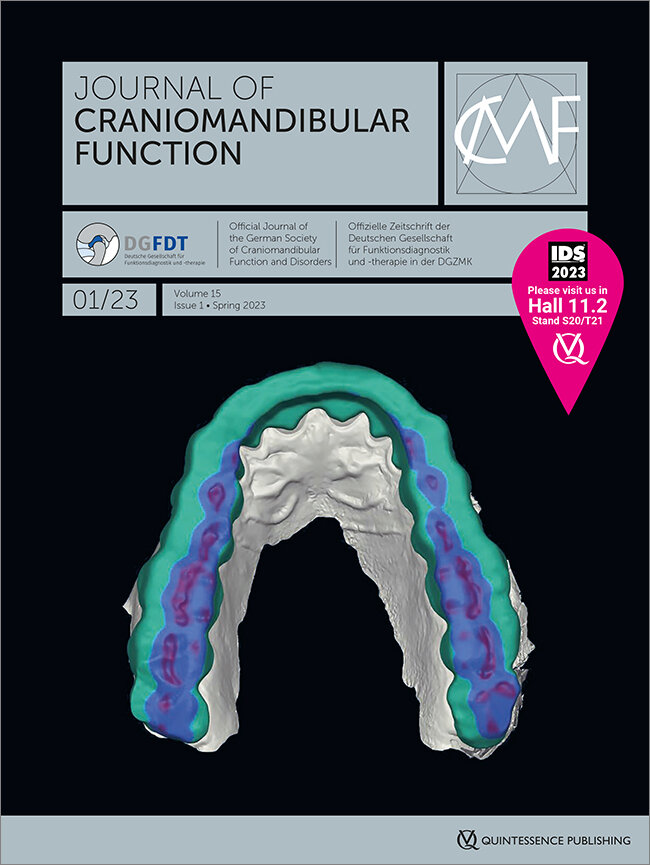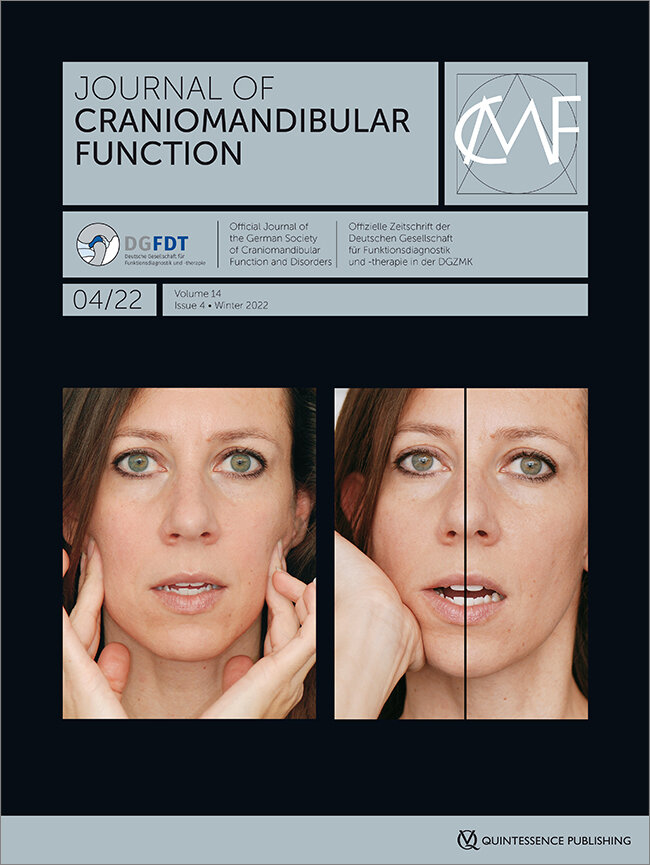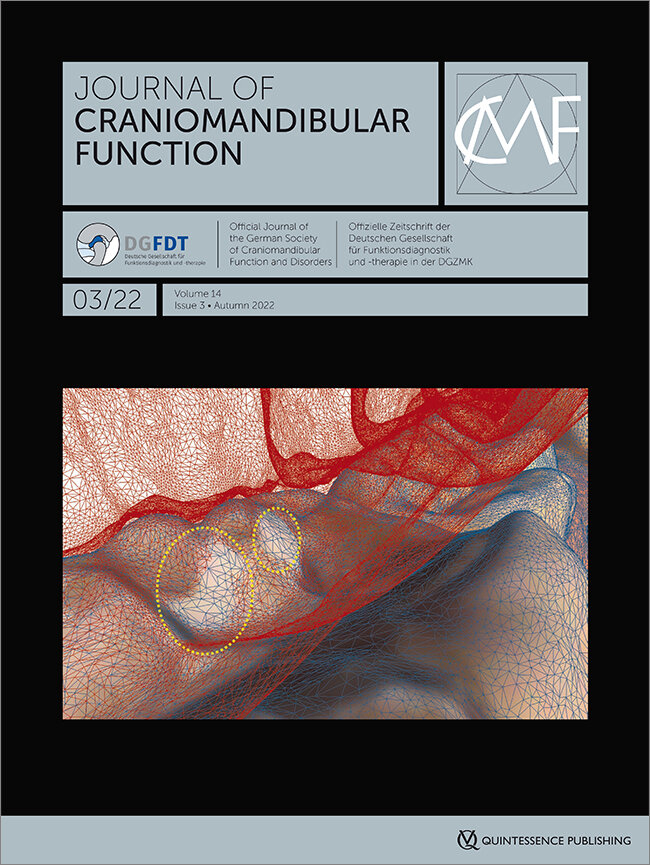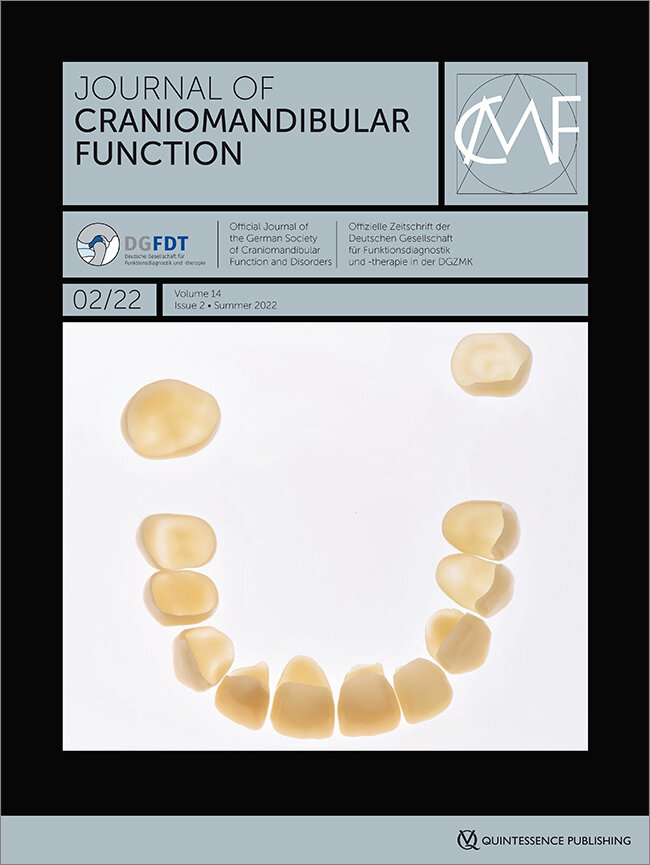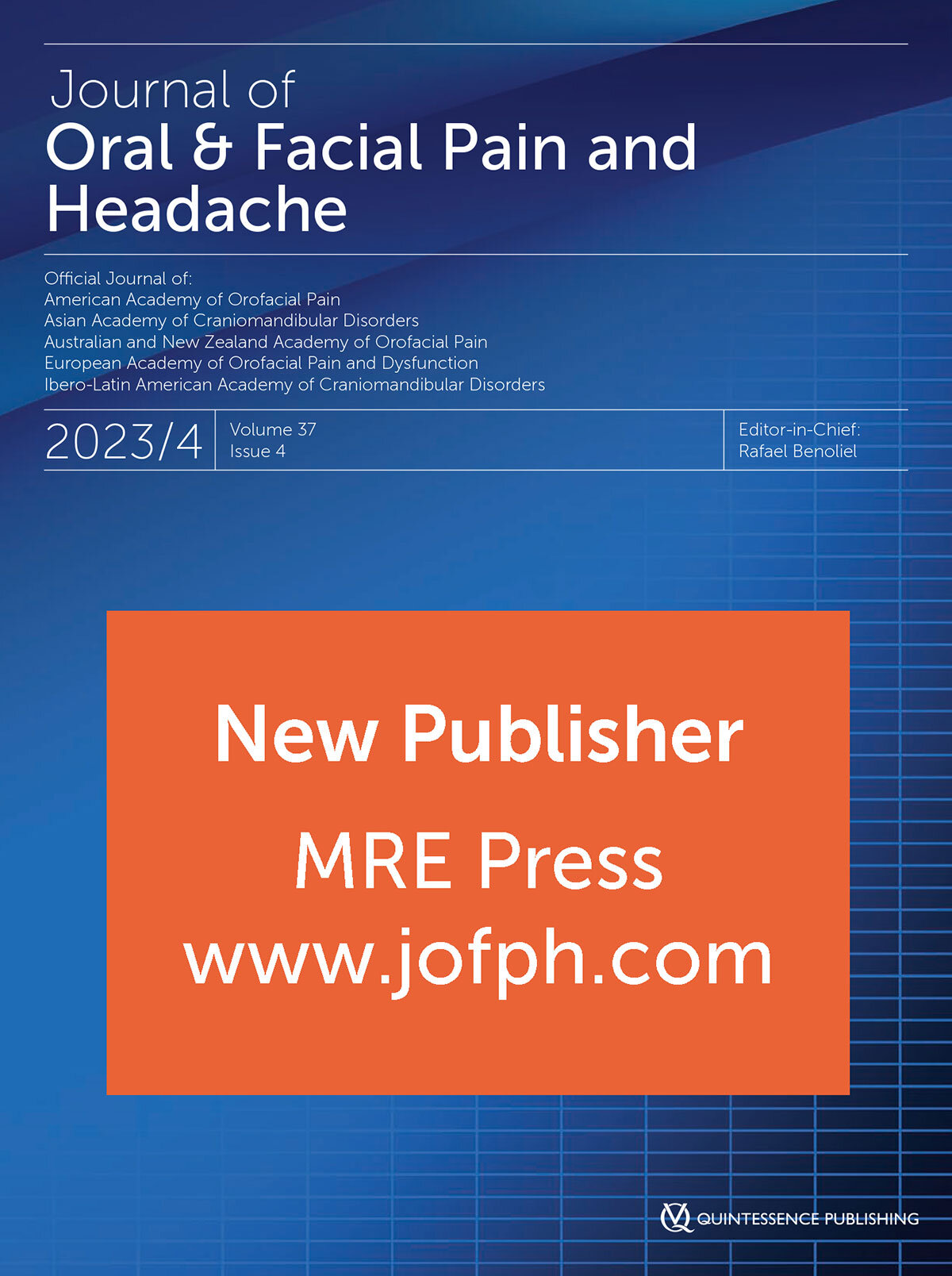Páginas 9-30, Idioma: Inglés, AlemánPeroz, Ingrid / Imhoff, BrunoS2k Guideline (Extended Version) – Part 1SciencePáginas 31-46, Idioma: Inglés, AlemánCarius, Max / Obst, Anne / Völzke, Henry / Bernhardt, OlafBruxism is a repeated masticatory muscle activity. It manifests itself as teeth grinding and clenching or bracing of the mandible without tooth contact, resulting in tensing of the masticatory muscles. Depending on the time of onset, sleep bruxism can be differentiated from awake bruxism. Previous studies have shown a correlation between the occurrence of awake bruxism and depression. However, longitudinal analyses of this association are rare. Anxiety symptoms have also received little attention so far. The aim of this analysis was to determine whether signs of depression and/or anxiety disorders at the baseline examination of the epidemiological Study of Health in Pomerania (SHIP-START-0) were risk factors for the development of self-reported bruxism at the time of the 5-year follow-up examination (SHIP-START-1).
Palabras clave: bruxism, epidemiology, longitudinal study, mental disorder, relative risk
SciencePáginas 47-58, Idioma: Inglés, AlemánSchmid, Alois / Strasser, Thomas / Rosentritt, MartinPurpose: To investigate the influence of occlusal interference using finite element analysis (FEA). Materials and Methods: The FEA model designed for this study centered on an all-ceramic, bilayered, fixed partial denture (FPD) retained on its maxillary first premolar and first molar, with the second premolar replaced by a pontic. The surrounding structures – such as the neighboring teeth, antagonists, and periodontium – were modeled. Four different loading cases were designed at occlusal interferences of 0, 8, 12, and 24 µm and were loaded by a simulated bite force of 300 N. Principal and Von Mises stresses, as well as strain, were evaluated for all included structures. Results: For interferences of 12 and 24 µm, failure-relevant tensile stresses in the veneering later were observed at the occlusal surfaces. Stress found in the zirconia FPD did not reach fatigue or flexural strength for any test load. Conclusion: Peak tensile stress was observed in close proximity to occlusal contact points, increasing with increasing occlusal interference. The FEA results suggest that the majority of occlusal stress is absorbed by the deformation of the periodontal ligament. Framework failure caused by the simulated interferences was not expected. Surface defects may ultimately lead to failure due to fracture or chipping, especially in cases of weaker ceramics or veneering.
Palabras clave: FEA, occlusion, ceramic
PRACTICE-ORIENTED OVERVIEW ARTICLEPáginas 59-71, Idioma: Inglés, AlemánHauschild, JustusSleep bruxism (SB) is a behavioral abnormality that has been frequently described in the current scientific literature. Similarly, credible evidence indicates that various sleep-related disorders or diseases associated with SB negatively impact restful sleep. Almost all of the available literature on this subject deals with sleep disorders and their effects on the individual. However, significantly less attention is paid to the possible interaction between bed partners and the significance of this for the illness of the individual. Sharing a bed as a couple is a behavior deeply rooted in social and cultural norms. The significance of co-sleeping for mental and physical well-being is emphasized in the relevant scientific literature. However, there is also evidence that bed partners can disturb each other’s sleep, which negates the positive effects of co-sleeping. To date, only a few studies have been able to show these interactions with synchronous polysomnographic recordings of couples. Aim: This article will examine the potential link between SB, morning headaches, and disrupted sleep patterns in couples. It will also investigate whether synchronized recordings of co-sleeping, along with outpatient testing, can help answer this question. Result: Peripheral arterial tonometry (PAT) is a validated outpatient sleep diagnostic procedure that allows for the synchronous somnographic recording of a couple’s sleep patterns and is therefore particularly useful for exploring the topic discussed in this article. Conclusion: Even though further scientific research on the subject of sleep in couples is needed, individual clinical examinations of patients with sleep disorders and/or morning headaches should include an investigation of possible interactive effects with a potential bed partner.
Palabras clave: co-sleeping, dental sleep medicine, peripheral arterial tonometry, rhonchopathy, sleep-related bruxism
Book ReviewPáginas 73-74, Idioma: InglésKatzer, LukaszHamdi Kent: CMD – Craniomandibuläre DysfunktionJOURNAL WORLD/REVIEWSPáginas 77-81, Idioma: Inglés, AlemánBernhardt, OlafA collection of interesting articles taken from international magazines on the subject of functional diagnostics and treatment








